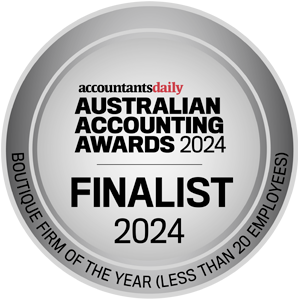
The Department of Social Services is currently co-ordinating a call for comment from Australian NFPs and charities to chart a better future for the sector. A Blueprint Expert Reference Group (BERG) has been established to develop the sector-led roadmap.
The Blueprint aims to establish a 10-year vision and priorities for action. It will become a roadmap for government reforms and sector-led initiatives to boost the sector’s capacity to support and reconnect Australian communities. There will also be a Review of Philanthropy to understand trends in philanthropic giving, with The Productivity Commission tasked with delivering an inquiry into philanthropy by May 2024.
In reviewing the document, we can highlight the following key points:
Discussion points for Australian NFPs
To develop a better future plan for NFPs, the issues paper raises general questions about the not-for-profit sector in Australia. It identifies these key areas for discussion:
- Measurement, outcomes and quality of services
- Policy, advocacy, communications and engagement
- Philanthropy and volunteering
- Governance, organisation and legal environment
- Leadership and staff development
- Government funding, contracting and tendering
- Information Technology, communication and marketing
- Leveraging assets and social finance.
Highlights of the issues paper
The issues paper highlights some of the recurring pain points for NFP management – such as outcome measuring for grant funding, taxation transparency and unlocking the potential of assets – and makes some interesting observations.
Outcomes based funding
NFP funding is shifting to prioritise outcomes over projects, but there are financial burdens to the NFP from these outcomes-based funding approaches.
The paper notes that measuring outcomes means new costs for the NFP in operations and service delivery. “Outcomes measurement requires new skills and organisational systems… New skills and systems needed are not broadly accessible to NFP organisations (Gilchrist 2020) and measurement expectations from funders are often not uniform.” It points to a lack of current models of sector-led coordination that build capacity and reduce costs in outcomes measurement. The collection of new outcomes data, “can create an administrative burden in terms of tracking outcomes and additional training and analysis costs. Recent research finds only 38% of NFP organisations collect any kind of outcomes data.”
Taxation inconsistencies and transparency
NFPs’ regulatory accountabilities sit across multiple levels of government, and this has led to inconsistencies in the sector in terms of accounting standards and taxation, the issues paper notes.
“Unlike the United States, the United Kingdom and Canada, Australia does not have a bespoke accounting standard for charities, which limits consistency in accounting, reporting and auditing.” Inconsistencies in tax concessions are another feature. “Australia also has a history of discretionary application of concessions such as public benevolent institution status by political leaders.” And only half of Australian charities have Deductible Gift Recipient (DGR) status, which is the main mechanism through which the federal Government incentivises Australian taxpayers to donate. The paper notes, “This means the processes by which concessionary tax status are conferred are not always transparent to NFP organisations or taxpayers.”
Ways to unlock the benefits of assets
The NFP sector is host to considerable and growing material and financial assets, although assets are unevenly held across the sector. The paper asks, “How can NFPs best use their assets?”
Charities reported more than $422 billion in assets in the 2021 ACNC reporting period, an increase of nearly $31 billion from the previous reporting period. “The overall growth of sector assets raises a question of whether and how sector-level resources might be unlocked in support of a more financially resilient and operationally healthy sector.”
Social impact investing (SII) is gaining attention as a means of leveraging capital across sectors to support social outcomes. “SII investments range from social impact bonds to payment by outcomes contracts, and layered or ‘blended’ financial products, which combine grants, loans and/or investments. A typical characteristic of many SII approaches is cross-sectoral partnership to support effective investment for specified outcomes.” However, the paper notes that many SII products are finance-driven –“not fit for the needs, structures and financial realities of the majority of NFPs and do not overcome some of the reasons why this sector makes relatively limited use of external finance.” Newer SII products are “providing more patient – or long term – capital and broader access to blended and grant finance than early SII products offered.”
Next Dimension Accounting will stay across these issues as they are developed as they ultimately strengthen our ability to work with clients to achieve the best outcomes in the existing or future environment.
How you can contribute
The issues paper contains relevant questions, the NFP Sector Development Blueprint Issues Paper and the NFP Sector Development Blueprint Issues Paper Summary Vision.
NFP responses are due by 20 December 2023. You can answer their questions for NFPs via the guided questionnaire or by uploading a submission. Your submission will form part of the next phase of work on the NFP Sector Development Blueprint.






